Maximizing Corn Yield with your Management Toolbox
June 18, 2018 | Category: Agronomy |June 20, 2018 Leigh Hudson CCA-ON, Twitter- @lhudson89
Planting 2018 has wrapped up and we are on to the next step of maximizing corn yields. The majority of us know what it takes to produce a corn crop. Seed, fertilizer, weed control, equipment to do the job, water, heat and a hope that mother nature is on your side. Those are the basics. What about pushing your corn crop to the next level?
At Maizex we focus on 3 pillars of intensive management: 1) fungicide at tassel, 2) higher/more efficient rates or placement of Nitrogen, and 3) higher plant populations. Now that we have the seed in the ground, population is something that we can look at for next year, but fungicides and Nitrogen can still be applied to maximize your 2018 crop. Just like every hybrid is not suited for the same soils, not all hybrids are responsive to intense management strategies. Are you just starting to explore intensively managing your corn crop? Applying a fungicide is a good place to start and a great tool in your toolbox that should be at your fingertips.
Modern fungicides have been around since the 1970s. In Ontario, they haven’t really been regularly used as a foliar application in corn until the early 2000s. Today, more than 30% of field corn acres are sprayed with a fungicide and continue to increase (Farm and Food Care, 2015). But why? We know that fungicides are used to protect the crop from disease, but what other advantages are there to doing this?
There are many advantages to using fungicide in corn. Improved standability, improved feed quality, greater stress tolerance, higher silage tonnages, and of course higher grain yields! But, does every hybrid respond to a fungicide application the same way? Not exactly. It all depends on the diseases present at the time of potential application, whether the hybrid is susceptible to the diseases and if the environment is favourable to the disease that the crop is being protected from. In addition to disease control, there are plant health benefits that such as improved stress tolerance, growth efficiency, and greater photosynthesis activity.
Some of the main diseases that we see in corn in Ontario are Northern Corn Leaf Blight (NCLB), Eyespot, Common Rust, Grey Leaf Spot and Anthracnose. NCLB (Figure 1) is the most widespread of the 5 diseases and has multiple strains, making it more difficult to manage from a disease resistant trait point of view. There is a chance of up to 30% yield loss if the disease is present during tassel period.
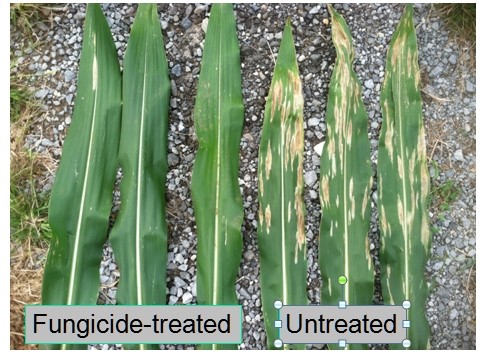
Eyespot (figure 2) is another foliar disease that has small circular lesions in the leaf that have a yellow halo around the dark centre of the spot. Typically, in Ontario, eye spot can equate to a 4 to 6 bushel/ac. yield loss.
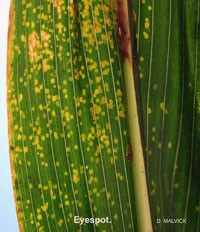
Common rust (Figure 3) is an orange pustule that develops on the surface of the leaf. The [Maximizing Corn Yield with your Management Toolbox] disease is usually worse than it looks on the outside, for the pustules are like an iceberg; much larger under the surface of the leaf. Common rust can cause a 4-12bu/ac. yield loss.
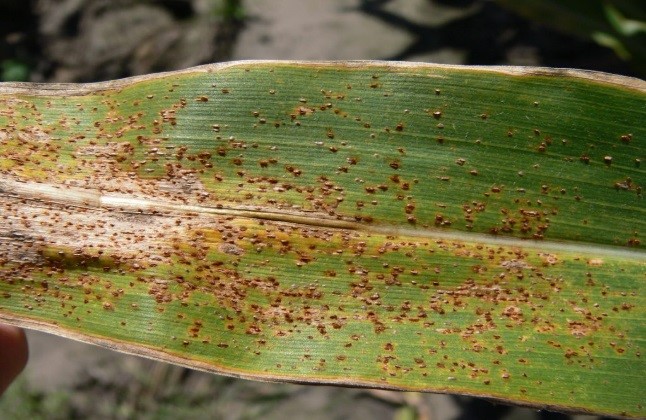
Grey leaf spot (Figure 4) is one of the 4 most common leaf diseases in Ontario corn crops. They are small grey slender lesions, that are rectangular when advanced. Young lesions have chlorotic halos and are tan/brown in colour. Yield loss from Grey Leaf Spot can range from 2-20% depending on the severity of the disease.
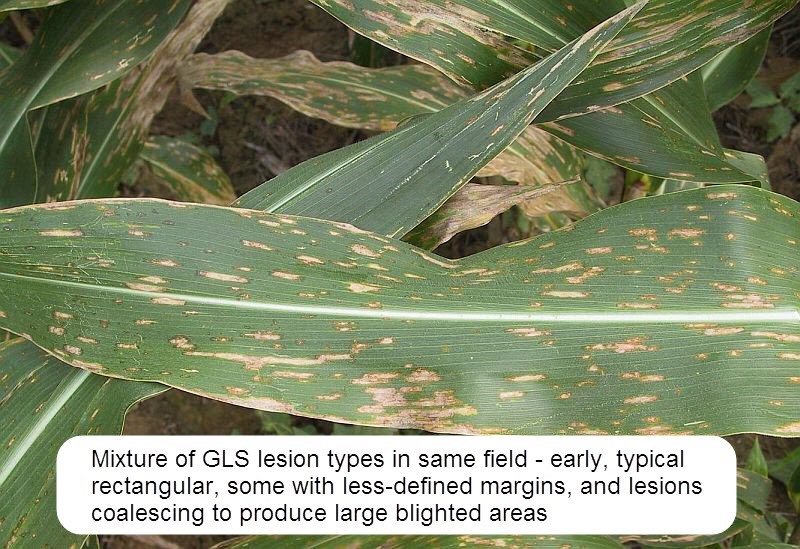
Lastly, one of the most prevalent stalk diseases in Ontario, is anthracnose, stalk rot or top die back (Figure One of the main symptoms of anthracnose is poor standability and poor stalk integrity. Lesions on leaves are irregular in shape and have dark halo with black spores in the middle. The disease can develop and continue to advance into the fall, showing black, shiny, hollow stalks that result in poor standability, making harvest a challenge.
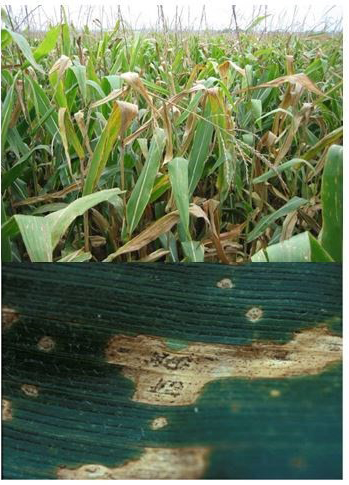
As you can see, we are contending against a handful of different diseases. Other ways of protecting your crop from these diseases include good rotation, good residue management and selecting hybrids with excellent disease tolerance. Putting all these tools, along with fungicides, together will set you up for success.
Every hybrid responds to different management strategies. Figure 6 and Figure 7 show 2 different hybrids respond to intensive management, Figure 6 being MZ 3397SMX, and Figure 7 being MZ 2810DBR. Both hybrids were put under the same comparisons.

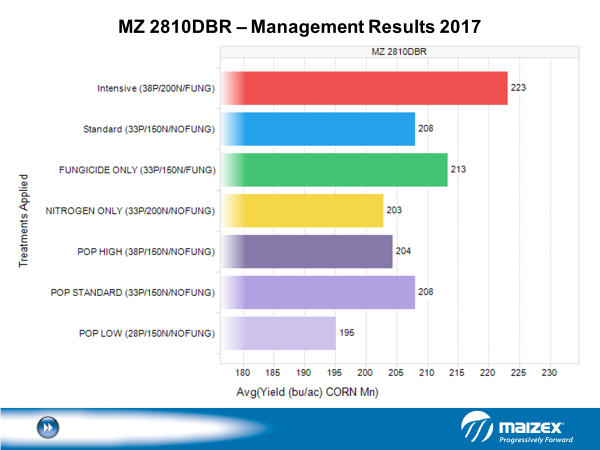
Comparing the standard practice of 33,000 plants/acre population, 150 units of N, and no fungicide, versus an intensive management system of 38,000 plants/acre population, 200 units of N and a fungicide application at tassel. As you can see, both hybrids responded differently to these management systems. But overall, fungicide had the greatest response of the 3 parts of the management system.
What should we be doing this season to set us up for disease management success?
Identify whether the hybrids you are growing are responsive to fungicide or not. Some hybrids will not respond to fungicide application. This way you can budget accordingly.
Prepare to apply fungicide before the tassel emerges. That way you are able to get the product on at the right time. Full tassel, or if you are applying for grain or silage quality, apply when corn is in early silk stage. This is the best time to apply for fusarium control.
Monitor weather patterns for desirable disease development weather conditions. Every disease likes certain weather conditions to develop.
Scout for diseases that might be present.
Push your corn crop to the next level with the fungicide tool in your corn management toolbox! Good luck!
